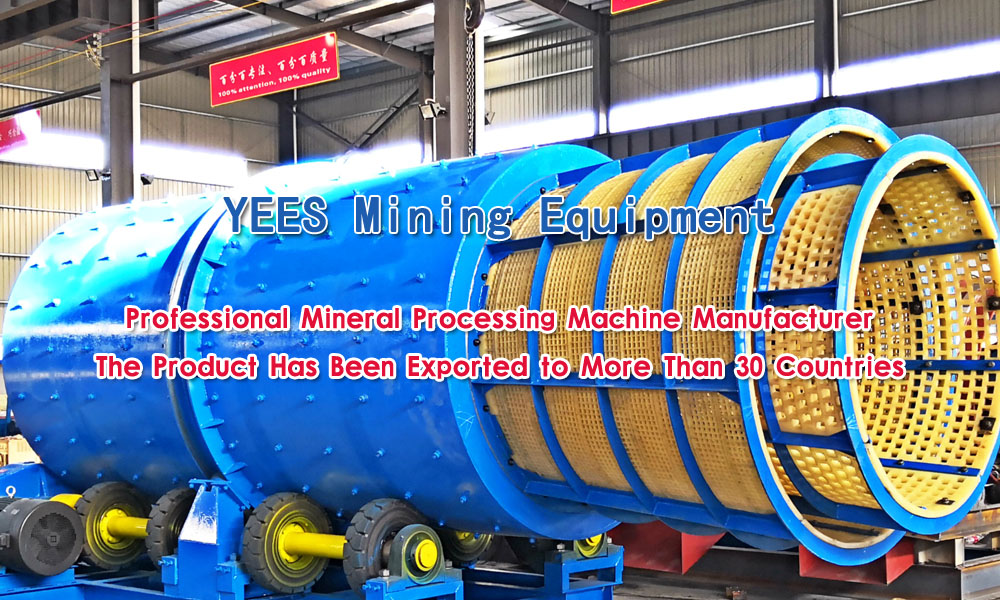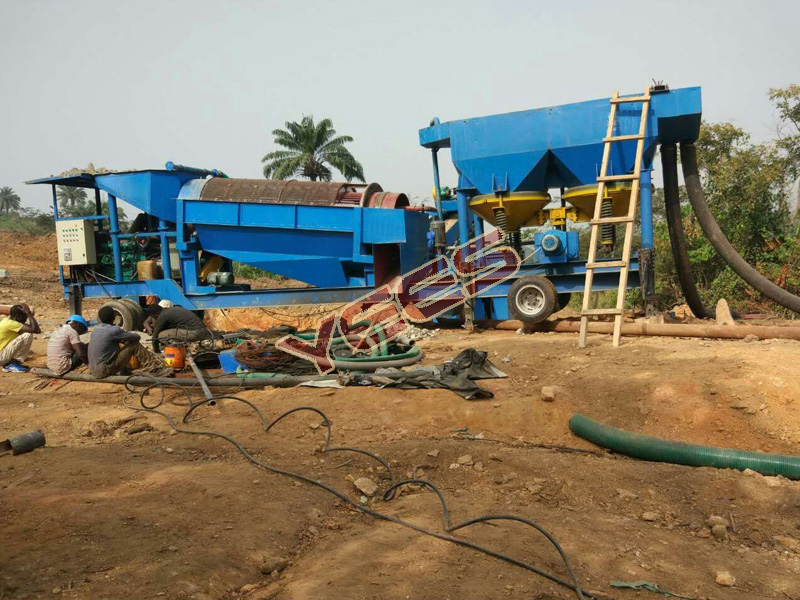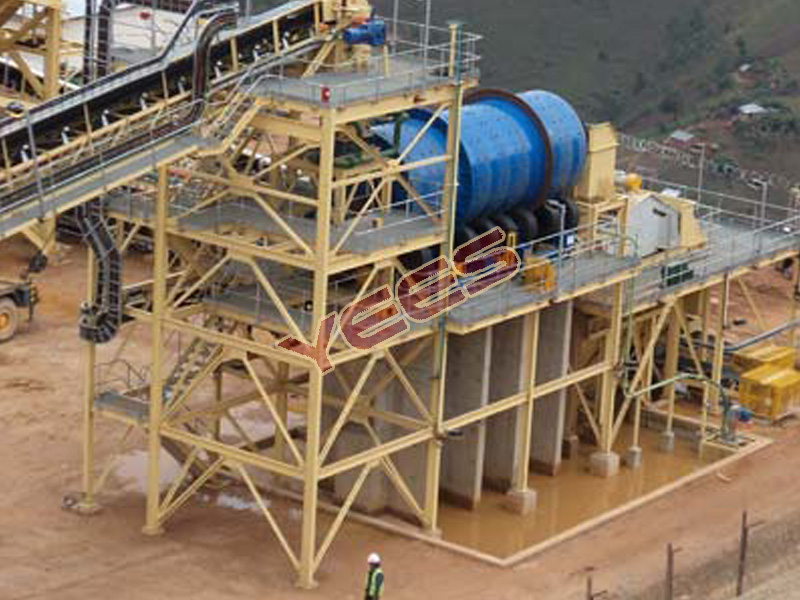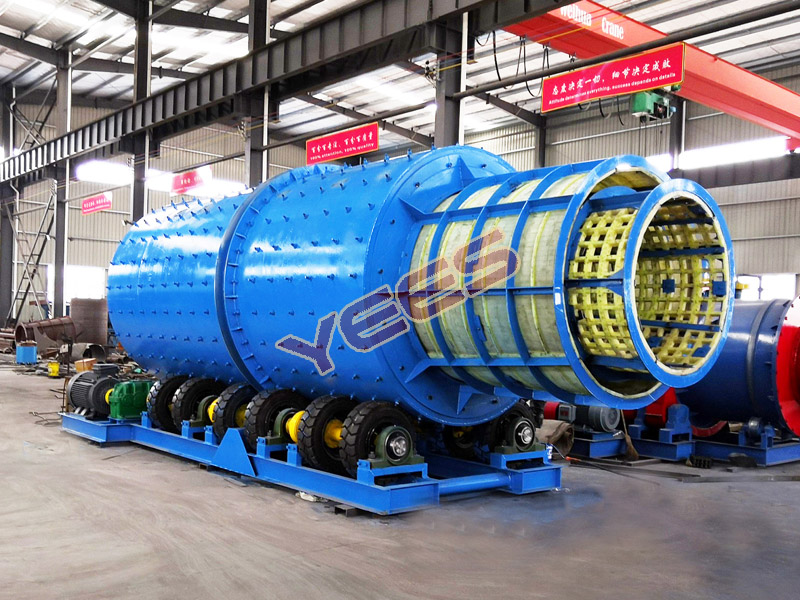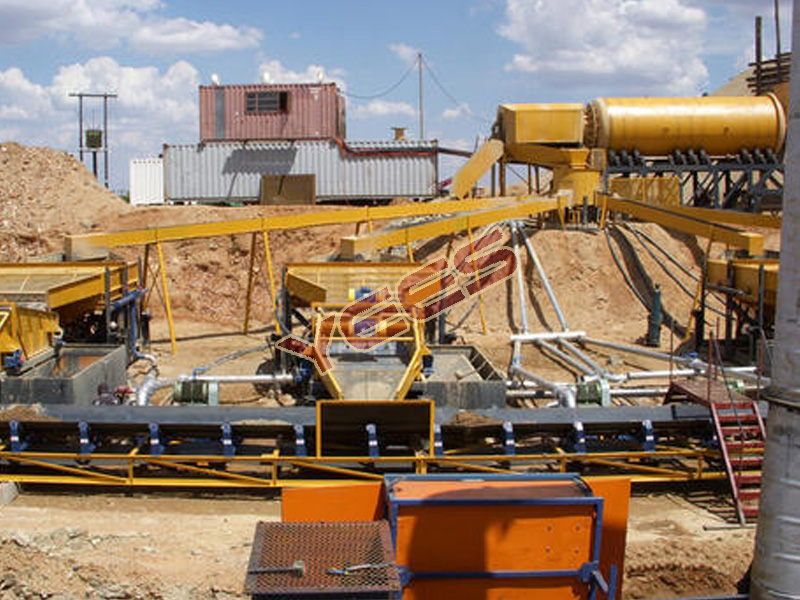Diamond is a relatively heavy mineral with a specific gravity of 3.52 g/cm3. Diamonds are heavier than most of the minerals that surround them inside the kimberlite. This fact can be used to separate diamonds from other minerals and simplify the recovery process.
The first type of process is scrubbing, the pieces of ore are scrubbed in order to remove any loose excess material attached to them, and are then screened. Pieces of ore smaller than 1.5mm are discarded, as it is too costly to extract diamonds from such small pieces.
The most common separation method is called dense media separation or DMS. Most modern DMS plants utilize hydrocyclone (or 'cyclone') or jig machine. The hydrocyclone is essentially a large centrifuge. The resulting mix of minerals is combined with water and ferrosilicon, a fine-grained powder that increases the density of the resulting water solution. The cyclone spins at a high rate of speed and the lighter minerals will flow to the top of the cyclone while the heavier minerals, including diamonds, will sink to the bottom where they can be recovered. Jig machine is a kind of separator which uses the pulsating vertical water flow to loosen the materials and separate them according to different density.
Even after most of lighter rocks and minerals are removed, only a small percentage of the heavy mineral concentrate is actually diamond. This concentrate must still undergo several rounds of diamond extraction. Final diamond recovery harnesses two other unique physical properties – diamonds are hydrophobic and they fluoresce when exposed to x-rays.
X-ray sorting recovery has 98% recovery factor on diamonds between 1mm and 25mm. However, it has proven to be less effective in recovering very large diamonds and some diamonds have surface coatings that prevent the diamonds from fluorescing in a way that the sorters can detect.
Machine Introduction
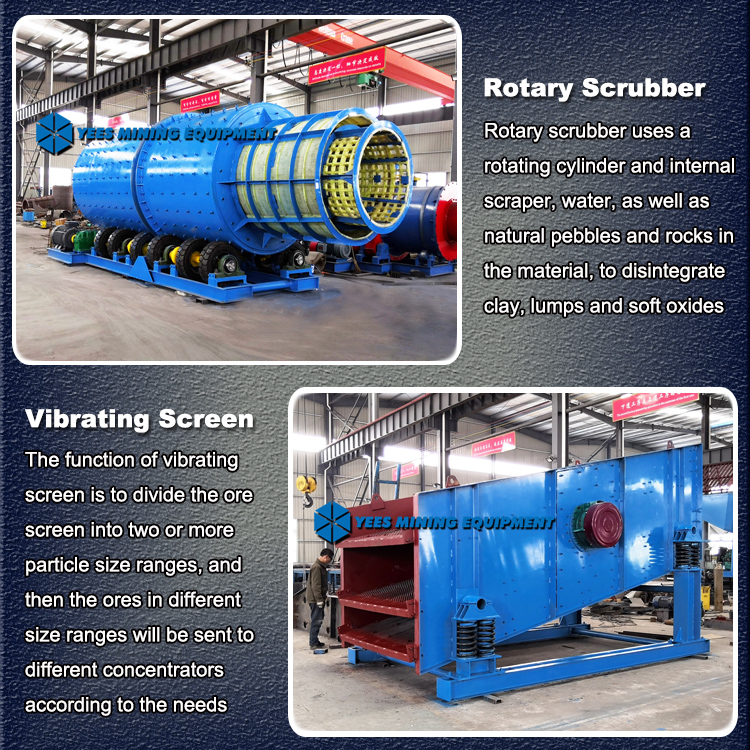
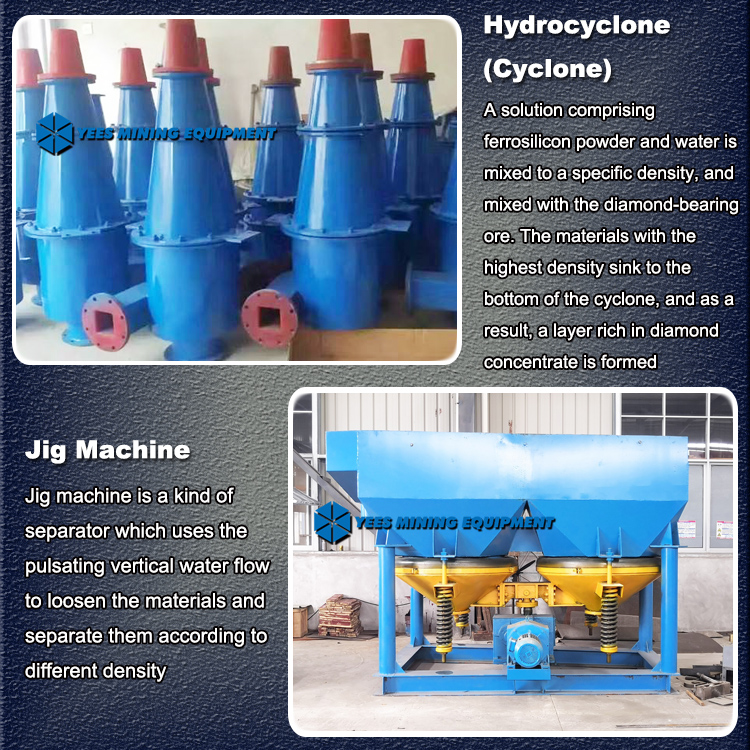
Video Link:
http://yeesmachine.com/casesinfo_16.html
http://yeesmachine.com/casesinfo_19.html

